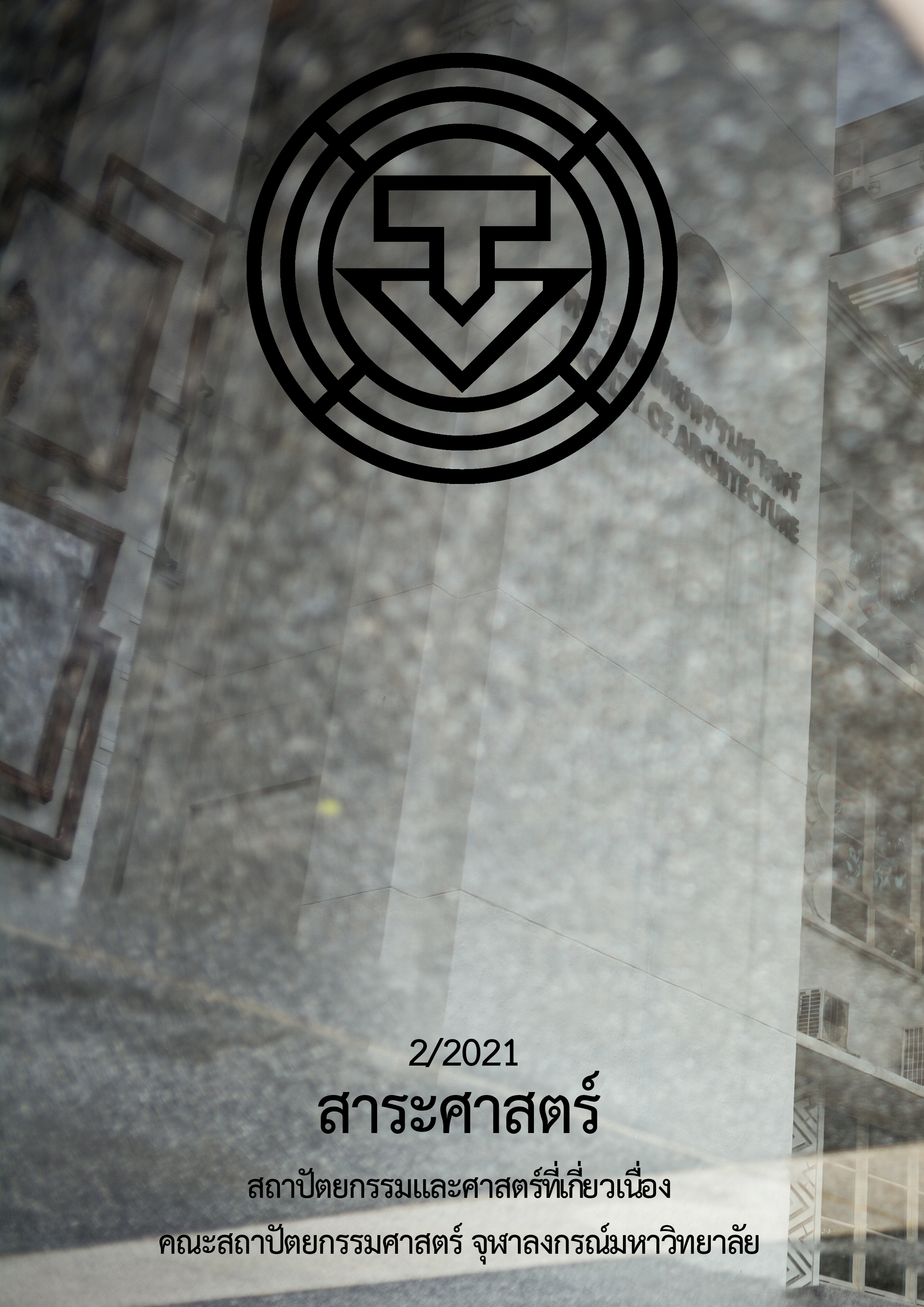Memory, Monument and Place: A Case Study of Don Chedi
Main Article Content
Abstract
Phra Borommarachanusorn Don Chedi is a significant national monument in Suphan Buri, Thailand, established on a historical and archaeological site for commemoration. A memorial fulfills its function only if it can create an emotional place for people. Therefore, this research focuses on finding a sense of place through the role of monuments over time. To understand the factors that form “place” and “sense of place” we study the tangible aspects and intangible aspects by analyzing the plans and interpret the meaning of the memorial and its elements, summarizing the relationship between the three interrelated components: (1) physical appearance, (2) activities and uses, and (3) meaning, symbol, or image. The research found that the memories of this place in each era are different, from the battlefield to the legendary site, to the empirical archaeological site, until becoming a registered monument, a memorial, and finally a tourist attraction. What remains, however, is a national consciousness: appreciation of the realm’s historical background, hero-worship, and national pride. These recognitions distribute the identity of this place.
Article Details
References
กรมศิลปากร. (2543). รายงานการบูรณะเจดีย์ในพระบรมราชานุสรณ์ดอนเจดีย์ อำเภอดอนเจดีย์ จังหวัดสุพรรณบุรี. [ม.ป.ท.].
คณะกรรมการบูรณะอนุสรณ์ดอนเจดีย์. (2502). อนุสรณ์ดอนเจดีย์ ที่ระลึกในงานพิธีเปิดอนุสาวรีย์สมเด็จพระนเรศวรมหาราช 25 มกราคม 2502. กรุงเทพมหานคร: สำนักพิมพ์ธนาคารออมสิน.
โชติ กัลยาณมิตร. (2539). สถาปัตยกรรมแบบไทยเดิม. กรุงเทพมหานคร: สมาคมสถาปนิกสยาม.
ตรี อมาตยกุล. (2498). เรื่องเจดีย์ยุทธหัตถี. กรุงเทพมหานคร: กรมศิลปากร.
เทพ บุญตานนท์. (2563). การค้นพบหลักฐาน “เจดีย์ยุทธหัตถี” ที่ใช้ยืนยันตำนานพระนเรศวรชนช้างเป็นเรื่องจริง. สืบค้นเมื่อ 15 ธันวาคม 2563, จาก https://www.silpa-mag.com/history/article_22125.html
เรื่องเสด็จพระราชดำเนิร ไปนมัสการพระเจดีย์ ที่ สมเด็จพระนเรศวรมหาราช มีไชยชนะยุทธหัตถี. ราชกิจจานุเบกษา. (2456, 3 มีนาคม). ตอนที่ 30ง. หน้า 2839-2860.
Canter, D. (1977). The psychology of place. London: Architectural Press.
ICOMOS. (1964). International Charter for the Conservation and Restoration of Monuments and Sites (The Venice Charter). Adopted at the ICOMOS 2nd International Congress of Architects and Technicians of Historic Monuments, Venice.
Montgomery, J. (1998). Making a city: Urbanity, vitality and urban design. Journal of Urban Design, 3(1), 93-116.
Nora, P. (1989). Between memory and history. Représentations, 26(1), 7-12.
Nora, P. (1997). Les lieux de mémoire vol. 1. Paris: Quarto-Gallimard.
Norberg-Schulz, C. (1980). Genius Loci: Towards a phenomenology of architecture. London: Academy Editions.
Norberg-Schulz, C. (1988). Architecture: Meaning and place. New York: Rizzoli International Publications.
Punter, J. (1991). Participation in the design of urban space. Landscape Design, 200, 24-27.
Relph, E. (1976). Place and placelessness. London: Pion.
Spencer, C. & Dixon, J. (1983). Mapping the development of feelings about the city. Transactions of the Institute of British Geographers, 8, 373-383.
Taylor, K. (2008). Landscape and memory: Cultural landscapes, intangible values and some thoughts on Asia. Proceedings of the 16th ICOMOS General Assembly and International Symposium: Finding the Spirit of Place -Between the Tangible and the Intangible. Quebec, Canada.
UNESCO. (2003, October 17). Convention for the safeguarding of the intangible cultural heritage. Adopted by the General Conference, Paris.


